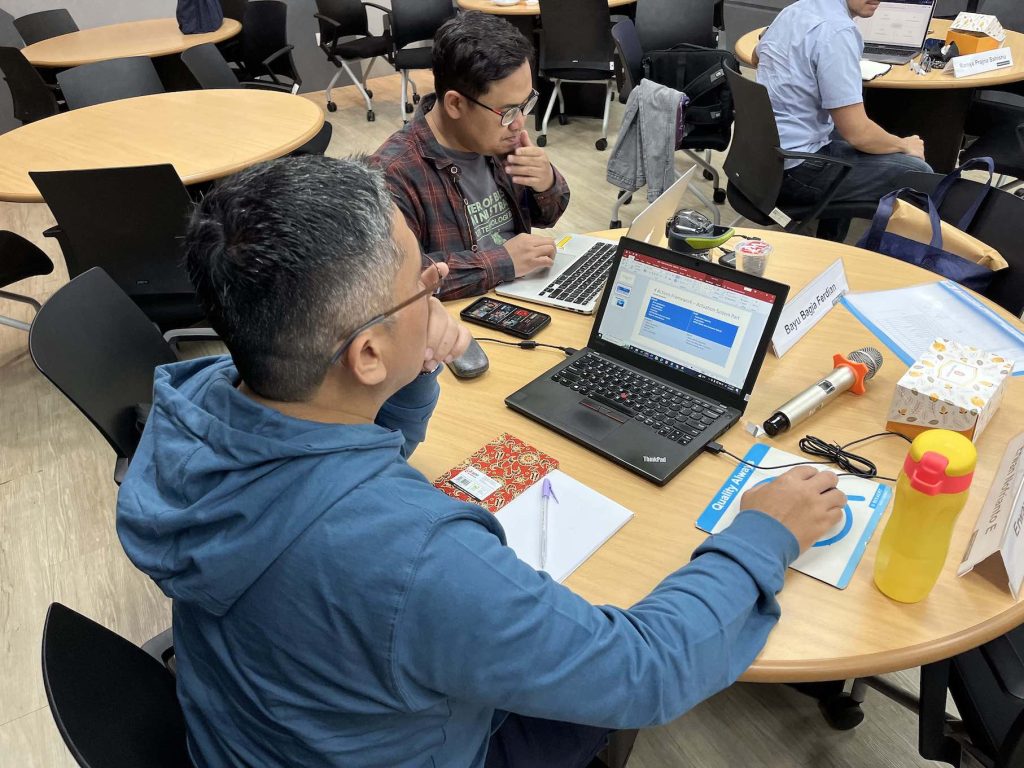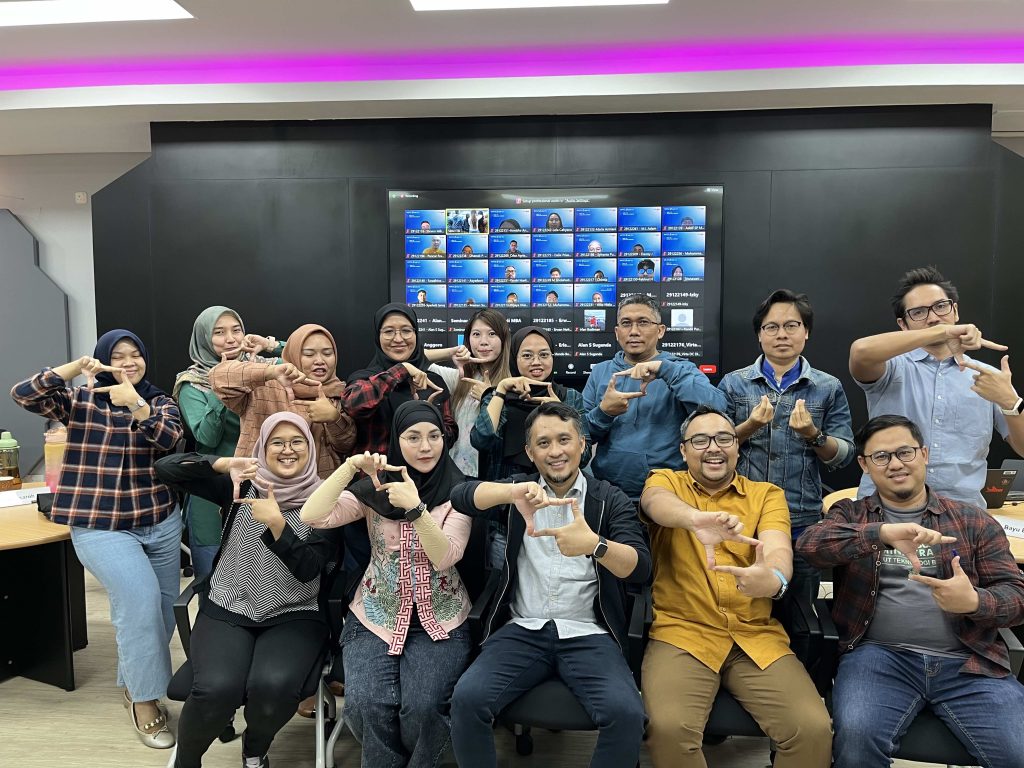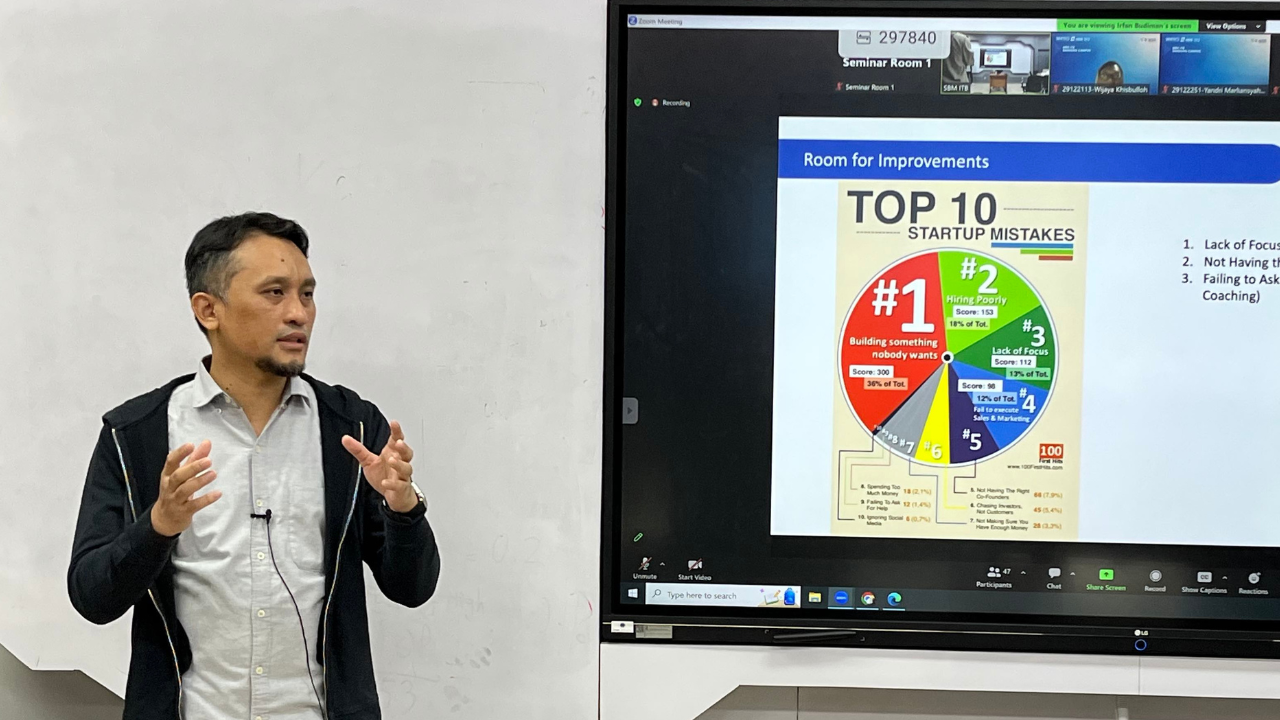A common challenge many companies face, particularly large enterprises, is the difficulty of promptly bringing innovative ideas to market. This is a predicament shared by Telkom Indonesia, a state-owned telecommunications company.
“Telkom also takes a long time to commercialize innovations,” said Irfan Budiman, Project Leader of Telkom Indonesia, when presenting as a guest lecture on Management of Innovation Technology and Entrepreneurship (MITE) for the Executive MBA ITB class on September 2, 2023.

Irfan says it took Telkom Indonesia seven years to launch Indihome as a fiber internet service provider, a milestone achieved in 2015, despite the discovery of fiber internet much earlier. However, the success of innovations at the commercial stage is far from guaranteed. Effective product launches must align with market needs and consumer desires.
Telkom Indonesia adopts a Customer Focus strategy, a group-level innovation proliferation strategy supported by an innovation ecosystem. This approach emphasizes addressing societal problems as a focal point of innovation efforts. The company employs three primary strategies in fostering innovation: Build, Buy, and Borrow.
Build means Telkom Indonesia gets innovation from within the company and builds it with its resources. AMOEBA is an innovation incubation platform provided for Telkom Indonesia Group employees. Employees will be given mentors and the resources needed to build their innovations on this platform.
Meanwhile, Buy means Telkom Indonesia, through MDI Ventures, acquires a start-up that it feels can provide complementary innovation to Telkom Indonesia’s products and business processes. This is different from Borrow, namely Telkom Indonesia’s collaboration with third parties who can provide services according to Telkom Indonesia’s business needs.
The class culminated in a product creation simulation employing the four Actions Framework. Participants were tasked with conducting product analysis based on four key factors: Reduce, Raise, Eliminate, and Create.
‘Reduce’ pertained to factors requiring reduction while remaining essential for the product. ‘Raise’ encompassed all additional elements to enhance the product. ‘Eliminate’ targeted factors that needed removal, and ‘Create’ referred to elements that were currently absent but needed to be incorporated into the product.
Sonny Rustiadi, the course instructor for MITE, highlighted the emphasis on the practical application of the lecture concepts within the context of non-start-up companies. “Innovation applies to corporations as well,” he emphasized.
This sentiment resonated with Ratih Siti Rachmawati, a student in the Executive MBA class, who stressed the need for innovation and disruption in all types of companies. She underscored the importance of choosing whether to be the object or instigator of such disruption.”





